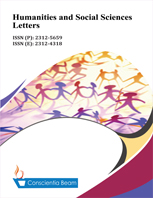Money Supply and Inflation Rate in Nigeria: The Missing Link
DOI:
https://doi.org/10.18488/journal.73.2019.73.156.166Abstract
Conventionally and theoretically increase in money supply according to the quantity theory of money triggers a high inflation rate in developed and emerging economies. The reality in Nigeria contravenes the quantity theory of money. This study investigates the missing link in Nigeria from January 2010 to December 2018 by applying the Johansen co-integration, Granger causality tests and Vector Error Correction Model (VECM) on the monthly data. The findings indicated that money supply does not cause inflation. Inflation is caused by non-monetary factors of political instability, corruption, poor basic infrastructure among others. Money supply and inflation co-integrate in the long-term. The causality test proposed a uni-directional flow from inflation to the money supply. Bi-directional causality was not observed in this study. The VECM result indicated that disequilibrium caused in the previous year can converge back to equilibrium in the current year. The general findings of the study disagreed with the quantity theory of money. The study recommends that non-monetary factors of political instability, corruption, poor basic infrastructure among others were responsible for the missing link. These factors should be checked and put in perspective to achieve low inflation at a single digit in Nigeria.

